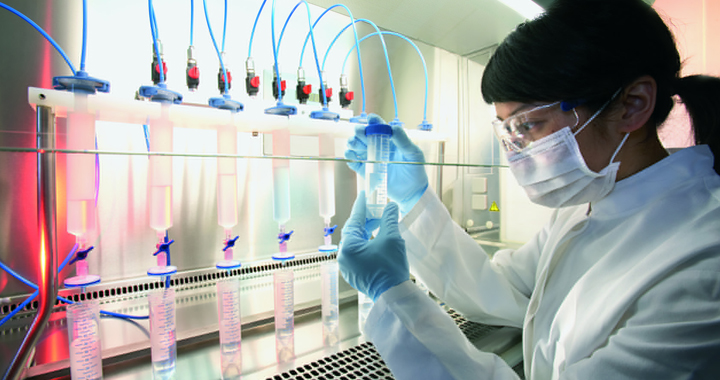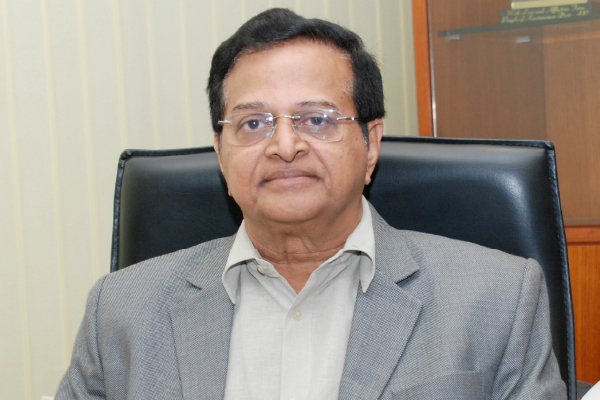
 The Indian pharmaceutical industry is the largest producer of Generics and the market in this segment is expected to see a further boom, along with speciality medicines like Bio-similars owing to many patented products going off patent, says Rahul Darda, Chairman and Managing Director, Brinton Pharmaceuticals, in conversation with Vivek Ratnakar of Elets News Network (ENN).
The Indian pharmaceutical industry is the largest producer of Generics and the market in this segment is expected to see a further boom, along with speciality medicines like Bio-similars owing to many patented products going off patent, says Rahul Darda, Chairman and Managing Director, Brinton Pharmaceuticals, in conversation with Vivek Ratnakar of Elets News Network (ENN).
How do you see Indian pharmaceutical industry evolving in the next few years?

We are expecting the Indian pharmaceutical market to grow over 15 per cent per annum till 2020 and will outperform the global pharma industry, which is set to grow at an annual rate of 5 per cent in the same period. Currently ranked 3rd in terms of volume and 14th in terms of value, Indian pharmaceutical industry is also the largest producer of Generics. And the market is expected to see a further boom in this segment, along with speciality medicines like Bio-similars owing to many patented products going off patent.
Though the future looks promising for the Indian pharma, for the industry to sustain this robust growth rate till 2020, pharma companies will have to rethink their business strategies. They will have to adopt new business models and drive innovation to cater to the fast evolving customer segment.
How can Indian pharmaceutical industry make the transformation from formulations to drug discoveries? What are the challenges?

Though the R&D base in India is small, it enjoys some unique advantages that will help it move well in this direction in future.
The country known widely for its chemistry skills also has a low cost of conducting research than the West, primarily because of more affordable scientific manpower. However, it is also true that most Indian companies find it challenging to take a new compound through all the stages on their own. To address this, some key Indian Pharma firms are pursuing a two-pronged strategy“analogue research along with licensing arena“ to help mitigate their risks as well as lowering the costs.
The out-licensing strategy follows a simple process – Company A (an Indian Pharma Company) identifies several new compounds in a family that are likely to succeed. It then takes them to the preclinical trial phase. Thereafter, it strikes a deal with a commensurate Big Pharma company operating in the same area wherein the multinational has the rights to market the compound in a particular market if the compound clears all the tests. Company A thus gets milestone payments” a certain amount for each stage of clinical trials that its compound clears. Once the final drug is launched in the market, Company A also gets the royalty for it.
What are the key challenges for building a robust industry- academia relationship?
The debate of a gap between what is proposed by research led by academia and what is practically a marketable product is age-old. There have been multiple attempts over the years to achieve a balance and productive interaction between academia and industry. But unfortunately, there are no continuing, substantive collaborative relationships between academic expertise and industry. Some minor processes like ensuring the pharmacy college students have an industrial stint in their final year of graduation have been set up. But this is just one of the few early steps. The interactions between the two bodies need to be improved by facilitating more of industry-academia relationships.
What is your opinion on the capping of drug prices in India? Is it going to help bring down the cost of healthcare in the country?
The cost of healthcare is dependent on many factors and drug prices form just one part of it. We believe that the Centres move to bring certain drugs under the Drug Price Control Order (DPCO) has affected the growth rate of IPM. As per some industry estimates, approximately 17 percent of IPM is under DPCO. This segment, unfortunately, has only grown by 1.1 percent during the first quarter of 2016-17, thus dragging the overall growth of IPM down to 6.2 percent, which is lower than expectations. To bring down the overall cost of healthcare in India, the government will have to take measures in improving the overall health infrastructure of the country and not just make the drugs cheaper.
The cost of healthcare is dependent on many factors and drug prices form just one part of it. We believe that the Centres move to bring certain drugs under the Drug Price Control Order (DPCO) has affected the growth rate of IPM. As per some industry estimates, approximately 17 percent of IPM is under DPCO.
How do you see GST impacting the pharma industry — both in short term and long term?
GST has ushered in a new era of tax reforms, not only for pharma industry but for all segments of the country. Looking at the short as well as long-term gains, GST would help the industry by streamlining the taxation structure as 8 different types of taxes are imposed on the Pharmaceutical Industry today. The implementation of one uniform tax will ease the way of doing business in the country, as well as minimise the cascading effects of manifold taxes that is applied to one single product, impacting the overall cost of operating. Moreover, GST would also improve the operational efficiency by rationalising the supply chain. Pharmaceutical companies need to review their strategy and distribution networks.
The implementation of GST would further enable a flow of seamless tax credit and improvement in the overall compliance to create an equal level playing field for the Pharmaceutical companies in the country. The biggest advantage for the companies would be the reduction in the overall transaction costs with the withdrawal of CST (Central Sales Tax). GST is also expected to lower the manufacturing cost.
What steps would you suggest to make India self-reliant in raw materials for pharma manufacturing?
Availability of quality raw material, which is also cost-effective, has been one of the key challenges in India. The easy access to cheaper raw materials in China is a huge deterrent to this issue. Most pharma companies naturally thus prefer to outsource their procurement from offshores to minimise their production cost. This can be addressed if as part of the make in India initiative, the Centre brings down the taxes on raw material/ API (Active Pharmaceutical Ingredients) or sets up SEZs like we have for finished formulations.
Be a part of Elets Collaborative Initiatives. Join Us for Upcoming Events and explore business opportunities. Like us on Facebook , connect with us on LinkedIn and follow us on Twitter , Instagram.












